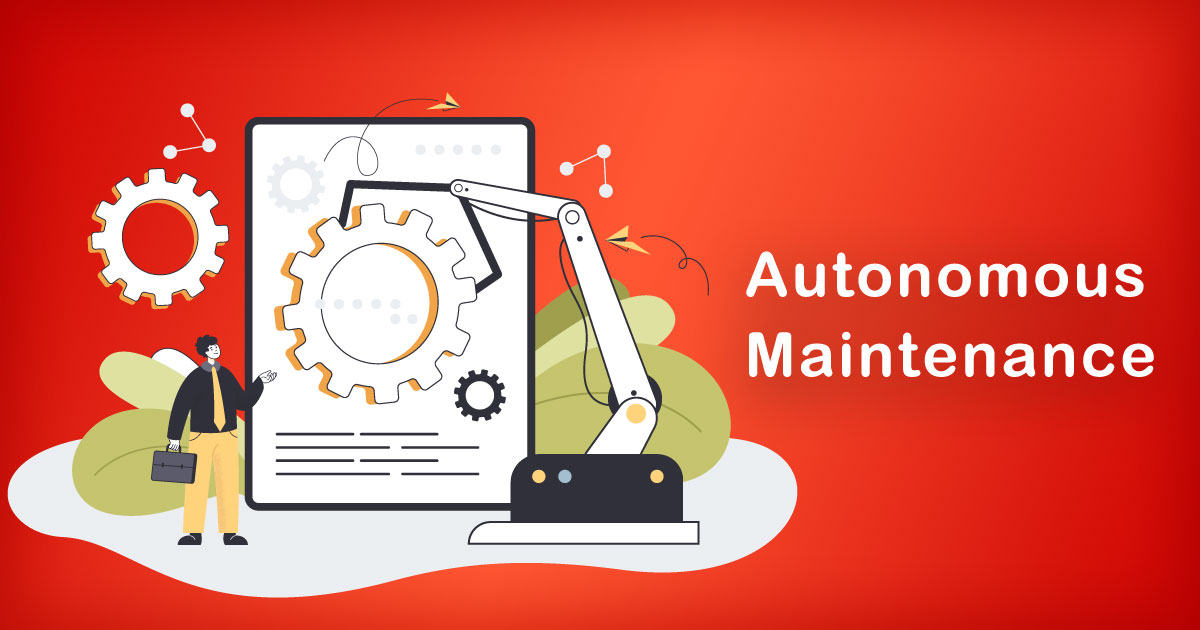Introduction
In the ever-evolving world of manufacturing, companies are constantly seeking innovative ways to improve productivity and reduce downtime. One such methodology that has gained significant traction in recent years is Autonomous Maintenance (AM). Originating from the Total Productive Maintenance (TPM) approach, AM empowers operators on the shop floor to take ownership of equipment maintenance. In this article, we will delve into the concept of Autonomous Maintenance, explore its benefits, and analyze its relevance in the Indian manufacturing landscape.
Understanding Autonomous Maintenance:
Autonomous Maintenance, also known as Jishu Hozen in Japanese, can be defined as a proactive approach to equipment maintenance that involves operators assuming responsibility for routine care and inspections. It aims to prevent equipment deterioration and breakdowns by involving the frontline workforce in the maintenance process. By encouraging operators to take a more active role, companies can foster a sense of ownership, enhance equipment reliability, and ultimately improve overall operational efficiency.
The Pillars of Autonomous Maintenance:
1. Initial Cleaning:
The first step in Autonomous Maintenance is thoroughly cleaning the equipment to remove dirt, dust, and debris that could potentially hinder its performance. This step not only helps identify hidden problems but also sets the foundation for subsequent maintenance activities.
2. Eliminating Sources of Contamination:
Operators are encouraged to identify and eliminate potential sources of contamination, such as oil leaks, loose bolts, or abnormal vibrations. This proactive approach reduces the likelihood of unplanned downtime and ensures equipment longevity.
3. Developing Standards:
Operators work collaboratively with maintenance personnel to establish and document equipment cleaning, lubrication, and inspection standards. These standardized procedures serve as a reference point for operators, facilitating efficient and effective maintenance activities.
4. Training and Skill Development:
To enable operators to perform maintenance tasks effectively, comprehensive training programs are implemented. Operators gain the necessary skills and knowledge to identify early signs of equipment abnormalities, perform basic inspections, and address minor issues promptly.
5. Autonomous Inspections:
Operators are empowered to conduct regular inspections, using checklists and visual aids to identify anomalies, abnormalities, or deviations from the established standards. This proactive approach enables timely intervention, reducing the likelihood of equipment breakdowns.
Benefits of Autonomous Maintenance
1. Increased Equipment Reliability:
By involving operators in the maintenance process, AM reduces the reliance on reactive maintenance and minimizes equipment failures. This leads to improved equipment reliability, increased uptime, and enhanced production output.
2. Enhanced Employee Engagement:
AM encourages collaboration between operators and maintenance personnel, fostering a sense of ownership and responsibility among the frontline workforce. This involvement in maintenance activities boosts employee morale and engagement, creating a positive work environment.
3. Skill Development and Knowledge Transfer:
Autonomous Maintenance programs provide operators with valuable training opportunities, allowing them to acquire new skills and knowledge in equipment maintenance. This knowledge transfer enhances the overall capabilities of the workforce and creates a culture of continuous improvement.
4. Cost Savings:
Implementing AM can result in significant cost savings for organizations. By preventing unexpected breakdowns, reducing downtime, and optimizing maintenance activities, companies can minimize repair costs, extend equipment life cycles, and improve overall operational efficiency.
Autonomous Maintenance in the Indian Context
In India, where the manufacturing sector plays a vital role in the economy, implementing Autonomous Maintenance can yield substantial benefits. The Indian manufacturing landscape is diverse, encompassing industries such as automotive, pharmaceuticals, textiles, and more. By embracing AM, Indian manufacturers can improve their competitiveness by enhancing productivity, reducing downtime, and ensuring consistent product quality.
Furthermore, Autonomous Maintenance aligns with the Indian government’s “Make in India” initiative, which aims to boost domestic manufacturing. By adopting proactive maintenance practices, companies can achieve higher levels of efficiency, reduce dependence on imported machinery, and contribute to the nation’s economic growth.
Conclusion
Autonomous Maintenance represents a paradigm shift in equipment maintenance practices, empowering operators to become proactive participants in the upkeep of machinery. By embracing AM, organizations can foster a culture of collaboration, improve equipment reliability, and achieve higher levels of productivity. In the Indian context, implementing Autonomous Maintenance can contribute to the growth and development of the manufacturing sector, making it an essential strategy for organizations striving for sustainable success in today’s competitive landscape.








